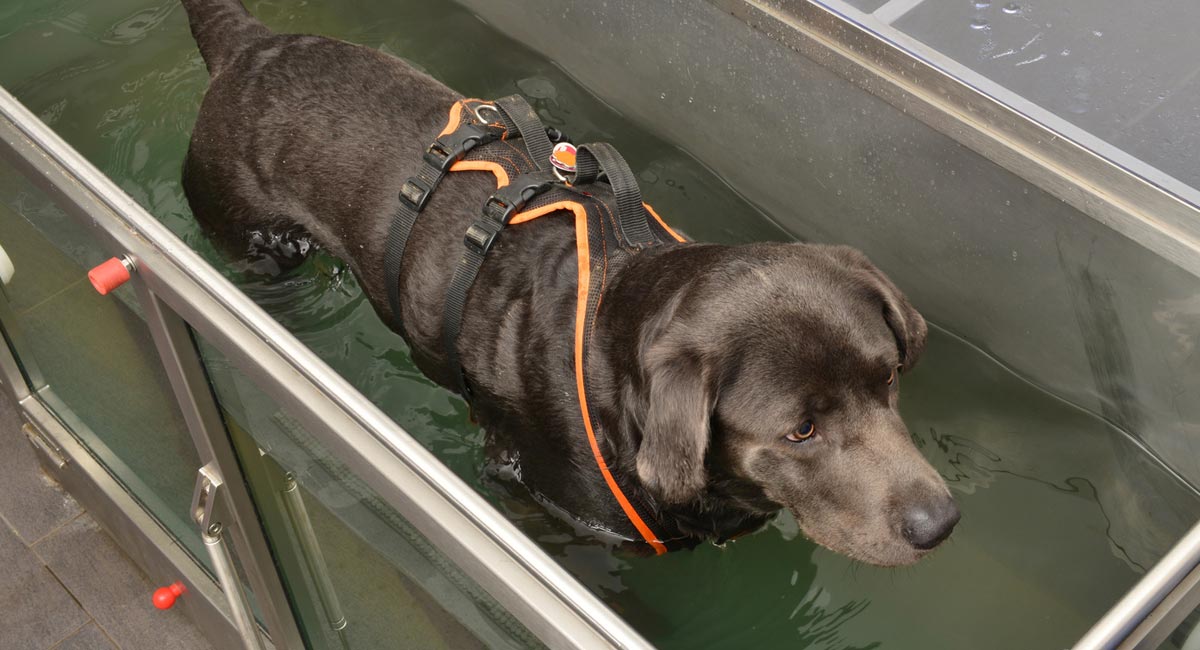In a previous blog I showed options for nursing care at home for patients in pain. Some clients may wish to do more and some cases may require it.

But where can clients go for a holistic approach to their pets’ pain?
We must always remember that any referral must abide by RCVS guidelines – and while this may rule out therapies without scientific evidence regarding their efficacy, there are still options.
Hydrotherapy
Hydrotherapy can be great – even for cats!
It certainly helped give my last dog extra time with us. He was exercised in a safe and controlled way and given a warm-up and assessment of his progress prior to each session, giving myself and the rehab nurse time to discuss his progress.
There are a number of courses available for vet nurses. Our therapist was an RVN who held a canine rehabilitation certificate. She really knew what she was doing and provided an amazing service.
As I mentioned, my dog received a warm-up before each session, but I have seen people just pop dogs into a pool and hope they do well – that’s not enough.
Acupuncture
I’ve been using acupuncture on my 19-year-old cat for some time. She’s at a tricky stage; arthritic and losing weight, but bloods are fine, and she is eating and happy.
I’ve elected to try more regular appointments and so far we are seeing some weight gain. It’s not much, but she seems more comfortable now, so I’m assuming fewer calories are being used to fight pain.
Contrary to popular belief, cats sit really well for acupuncture. Mine sits on the table for 30 minutes with no restraint – she even purrs.

Last time we visited she was feeling better and stronger, and the vet said how pleased she was with her progress. We’ve now advanced to larger (and more) needles. Her ongoing eye problem has even improved with the acupuncture, because it treats holistically – that is, it treats the entire animal, not just the area focused upon.
Not just for horses
Beyond these options you find many complementary therapies are mainly thought of as for equine patients; our horsey friends can access physios, chiropractors and massage therapists easily.
It seems holistic treatment is more widely used in the equine world; I recall colleagues booking “back crackers” for their ponies.
Massage and physiotherapy
Massage and physio have similarities, but here’s a great description of the differences. You can use them for any patient, depending on the condition and what you want to achieve, and they’re available for dogs, too. Both can improve mobility, reduce swelling and inflammation, and reduce pain.
Veterinary chiropractic
Chiropractors are also available for non-equines, and a list of UK-based veterinary chiropractors can be obtained from the British Veterinary Chiropractic Association (BVCA). Again, you need to decide what you want to achieve for your pet, and discuss this and get a referral from your primary care vet.
There’s a lot of information in this post and I’m not suggesting you will use every option, but it’s good to know what the options are, whether for your own pet or so you’re prepared for what clients might ask for.
Veterinary care for patients is an ever expanding field. This is exciting for us and great for patients.

Leave a Reply